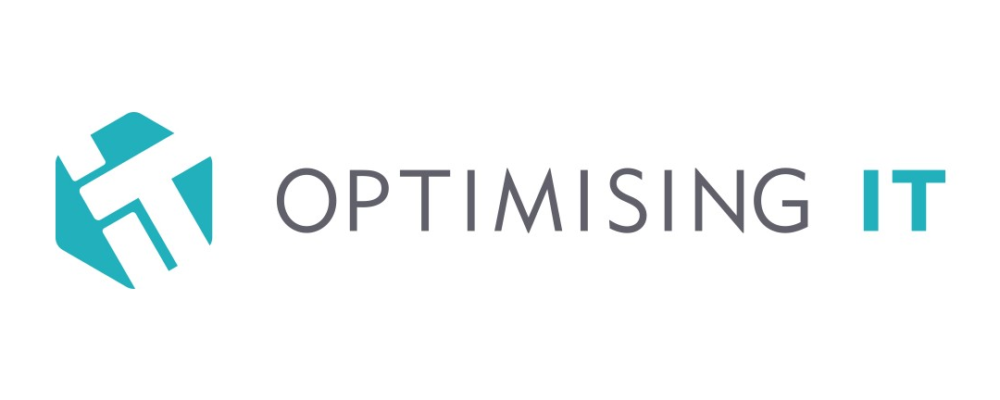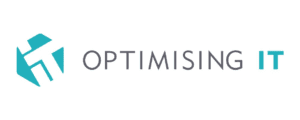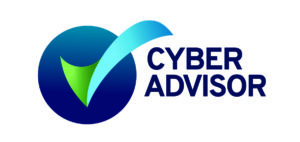Many UK businesses don’t have tools for remote workers to be successful. We go over a list of 18 solutions to include in your toolkit.
The COVID-19 pandemic has been a watershed moment for remote work, forcing entire organisations to accelerate their work-from-home policies amid social distancing guidelines.
For instance, IBM, which terminated its remote work policy in 2017, instructed employees in lockdown-affected areas to work from home “wherever possible.” In Japan, PR agency Dentsu asked staff in their Tokyo headquarters to continue working from home.
What the Shift to Remote Work Means for UK Businesses
While the UK Government has already greenlit a return to the office in England, the shift to remote work is predicted to remain. According to a 2020 global HRD survey, 91% of human resources leaders want to campaign for remote or hybrid work set-ups to continue in a post-pandemic world.
But for many businesses, the transition to remote work has been a difficult one. According to a 2020 survey by design and app development firm Studio Graphene, 49%of the 900 UK businesses were unprepared for the shift to remote work before lockdown began.
That means many companies were ill-prepared for their workforce to operate remotely. Fortunately, there is no shortage of software and tools for remote workers to be productive, collaborate with other team members, and securely access and share your company’s data. We’ve put together a list of 18 tools for remote workers split into six categories:
- Team collaboration
- Cloud storage and documents
- Project management
- Video conferencing and scheduling
- Time tracking
- Productivity tools
Team Collaboration
The success of your remote teams rests on your ability to communicate with each other effectively. There’s a time and place for email, but you need a reliable team collaboration tool for real-time communication.
Related Reading: The Growing Threat of Email Hijacking
1. Microsoft Teams
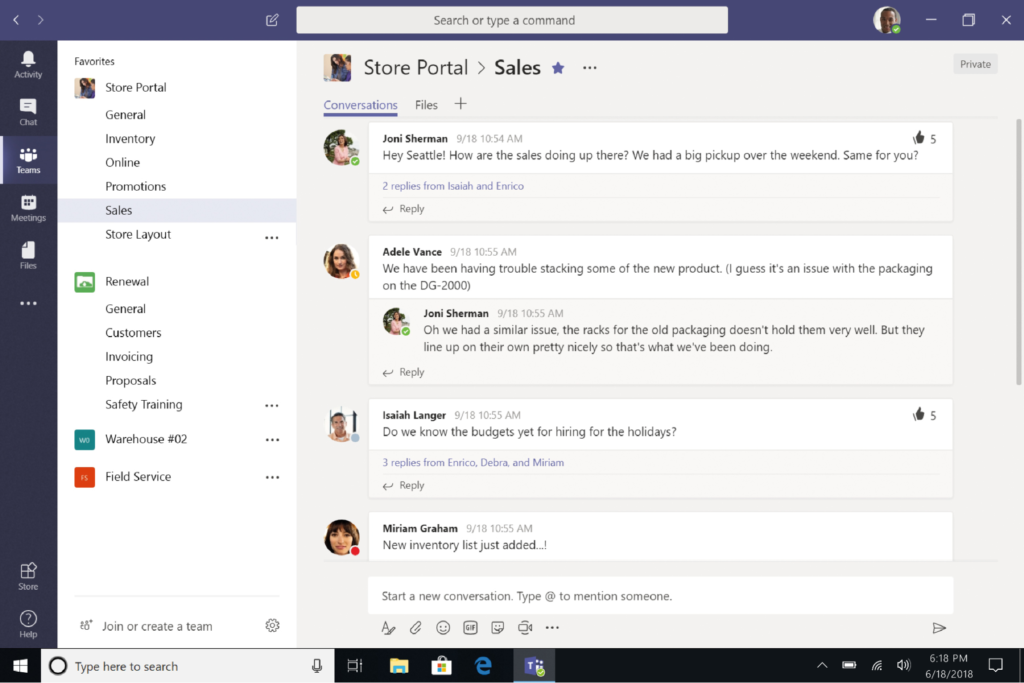
Image Source: Microsoft
Microsoft Teams allows your remote workers to communicate one-on-one or join team chats, where they can also share files securely. Reduce your email traffic by centralising meeting notes, attachments, and calendars within the app.
Related Reading: Microsoft Teams – Plan for Long-Term Flexible Working
And with its tight integration with the Microsoft ecosystem, Microsoft Teams seamlessly connects your remote teams with apps such as Office 365 (for real-time collaboration on documents, spreadsheets or presentations). Microsoft Teams also supports third-party apps, such as Asana, Miro, Salesforce and more.
2. Slack
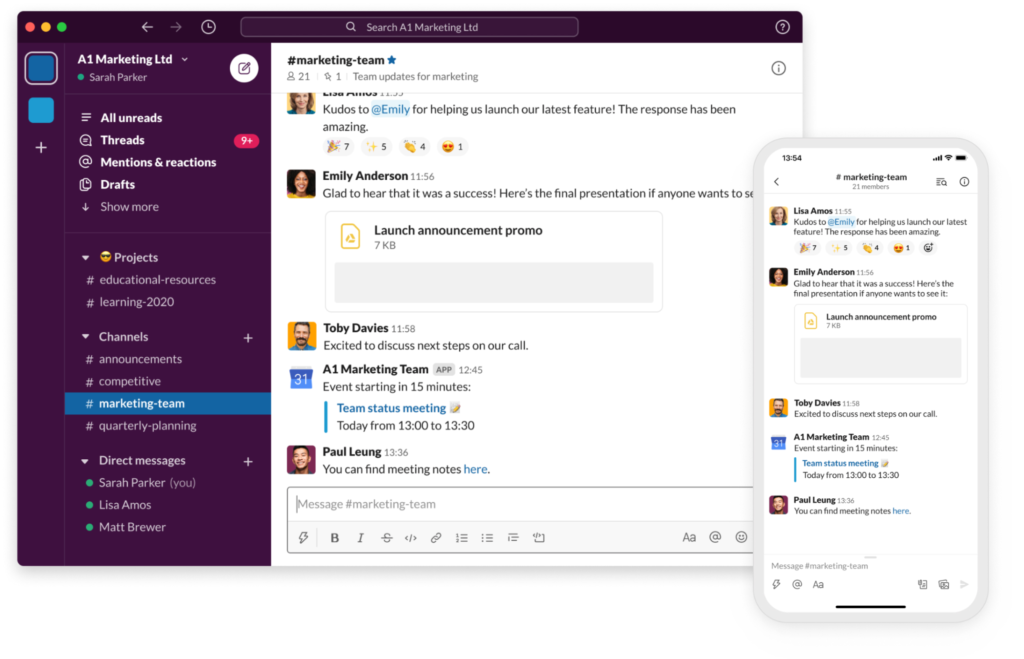
Image Source: Slack
Envisioned as a tool to replace email, Slack is a popular messaging platform that enables digital communication between remote teammates to share ideas, start polls, and upload files. Managers can organise projects by channel, compartmentalising all chats about a specific topic in one place.
Salesforce acquired Slack in December 2020 — a move that could signal a tighter integration with Salesforce’s assortment of tools, the way Microsoft Teams is plugged into Office 365.
3. Twist
Twist is another messaging platform that takes a different approach to team collaboration. While it lacks many of the nifty integrations found in Slack, supporters argue that these and other features make Slack feel bloated and intimidating. It’s also why Twist styles itself as the “calmer way to work”.
Twist’s usability is based on a simple hierarchy: channels > threads > messages. This makes it easy to create places for specific tasks, unlike in Slack, where users have to search channels to look for threads.
Cloud Storage and Documents
Reliable cloud storage is critical to sharing your company’s data and keeping it safe from cybercriminals.
Related Reading: Local Area Network Trends – The End Of Lan As We Know It?
4. OneDrive for Business
OneDrive for Business is Microsoft’s enterprise cloud solution available to users of Office 365 Business plans.
OneDrive lets you automatically backup all your documents and files to the cloud. It has all the features of regular OneDrive (for consumers), but comes with expanded features tailored towards organisations, such as additional storage, authentication, antivirus controls and integration with Microsoft’s Office 365 suite.
At Optimising IT, we recommend OneDrive for Business as part of our cloud consulting solutions.
5. Google Drive
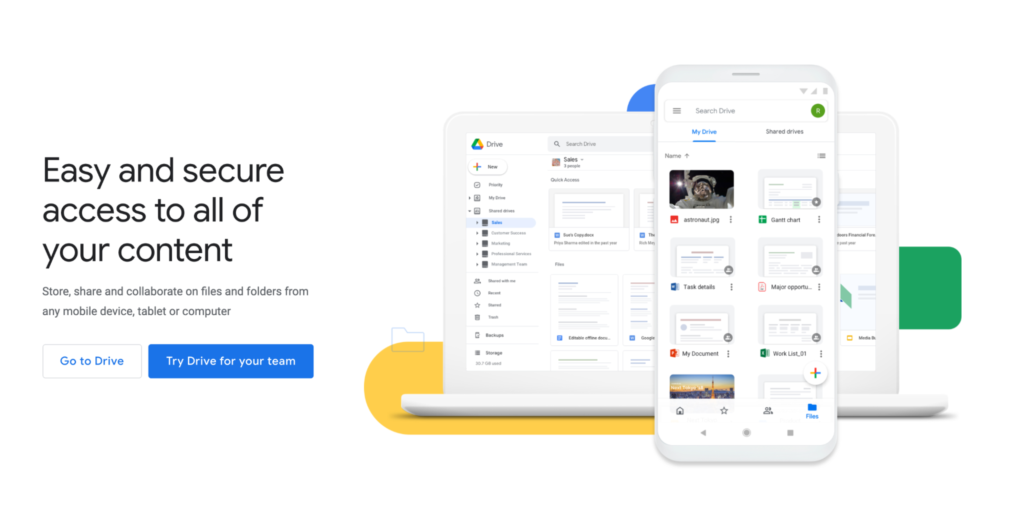
Image Source: Google Drive
Google Drive is arguably the most popular cloud storage solution for consumers, providing 15GB of free storage across Gmail, Google Drive and Google Photos. It allows remote workers to store and share documents using built-in tools like Google Docs, Google Sheets, and Google Slides.
In addition, businesses can use Google Workspace, Google’s enterprise solution that comes with all of Google Drive’s features, plus added security features such as 2-Step Verification, Single Sign-On and endpoint management for lost devices and employee turnover.
6. Dropbox

Image Source: Dropbox
Founded in 2007, Dropbox was one of the first tech startups to provide free cloud storage to consumers and enterprises. Despite being overshadowed by the more popular Google Drive, Dropbox continues to plug away, providing solutions for businesses to manage their remote teams. Workers can sync, share and collaborate on documents in real-time.
App integration with Dropbox also allows small businesses to streamline their workflows with apps like Zapier and Xero, eliminating the need to switch between software and devices.
Related Reading: Cloud Storage Security: Can Cloud Storage Get Hacked?
Project Management
Relying solely on emails to run projects creates performance bottlenecks and is dangerously prone to human error. This is where project management tools come in, allowing businesses to organise, assign and manage their remote workers’ tasks.
7. Teamwork
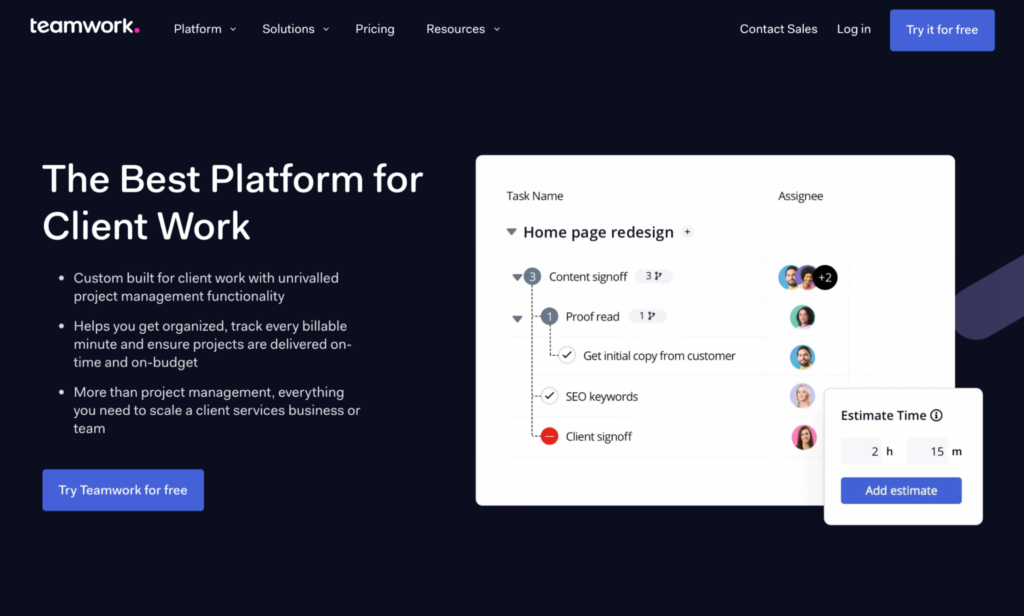
Image Source: Teamwork
Teamwork (formerly Teamwork Projects) is an award-winning project management app that lets project managers build detailed task lists under each project. Teamwork enables you to go into the granular details of your projects and assign different tasks and their subtasks to specific collaborators.
You can also set milestones and deadlines and enable remote workers to track how much time they spend working on each task — you won’t need a separate time tracking tool.
8. Basecamp

Image Source: Basecamp
Basecamp’s clean design, friendly interface and shallow learning curve make it a favourite among managers, teams and freelancers. Basecamp offers several built-in project management tools, such as to-do lists that can be assigned to individual remote workers and message boards under each task or task list. These allow team members to discuss specific topics on one page.
Users can also upload files directly to Basecamp — great if you’d rather not go back and forth between a separate tool like Google Drive for your documents and files.
9. Asana

Image Source: Asana
Asana is a work management tool that straddles the functionality of a content management system and project management platform. Project managers can create boards or lists for projects to house details on their meetings, tasks and subtasks.
With Asana, you can:
- Assign tasks to specific people in your remote teams
- Organise tasks into sections, assign start dates and deadlines
- Create workflow templates for specific tasks
- Create dependencies to indicate which tasks need to be completed before others begin.
Meetings and Scheduling
Businesses have had to lean heavily on video conferencing tools and scheduling apps to organise team meetings. Here are three tools you can use to maintain communication with your remote team members.
10. Zoom
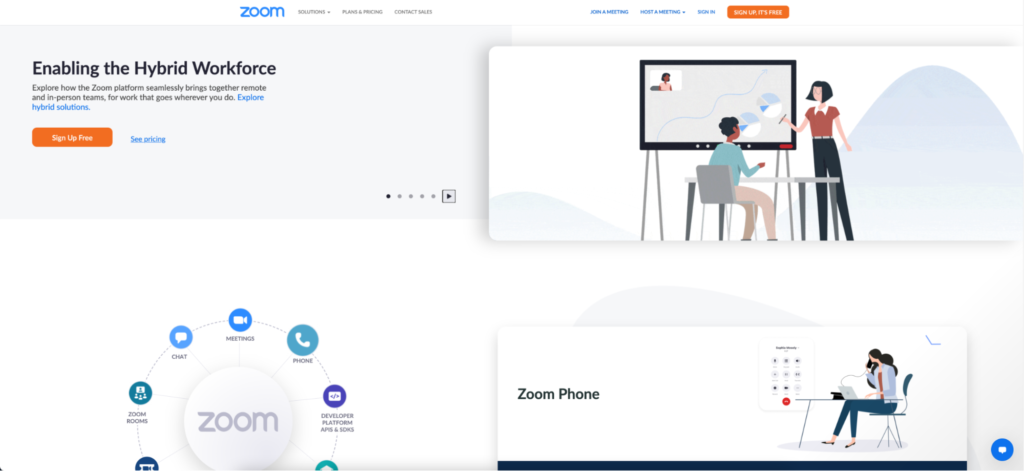
Image Source: Zoom
During the pandemic, no app has received more media mileage than Zoom, growing from a relatively obscure video conferencing tool into a household name. It continues to be a fixture of pandemic life, allowing groups to communicate — from celebrities holding media interviews to small business owners hosting team huddles.
Zoom’s many claims to fame include amazing video quality, the ability to accommodate up to 100 participants in a single meeting and tools that let hosts record and stream video calls. Zoom has paid plans, but anyone can run 40-minute sessions free of charge.
11. Google Meet

Image Source: Google Meet
Google Meet (formerly Google Hangouts) is another popular video conferencing tool that saw its user base grow during the pandemic. Google Meet boasts excellent encryption by default and comes with a plethora of features not found on Zoom, such as low-light mode and the ability to host and join a meeting from any browser with no plugins required.
Google Meet’s integration with Google’s suite of tools makes it a no-frills meeting solution for businesses already deep in the Google ecosystem.
12. Calendly
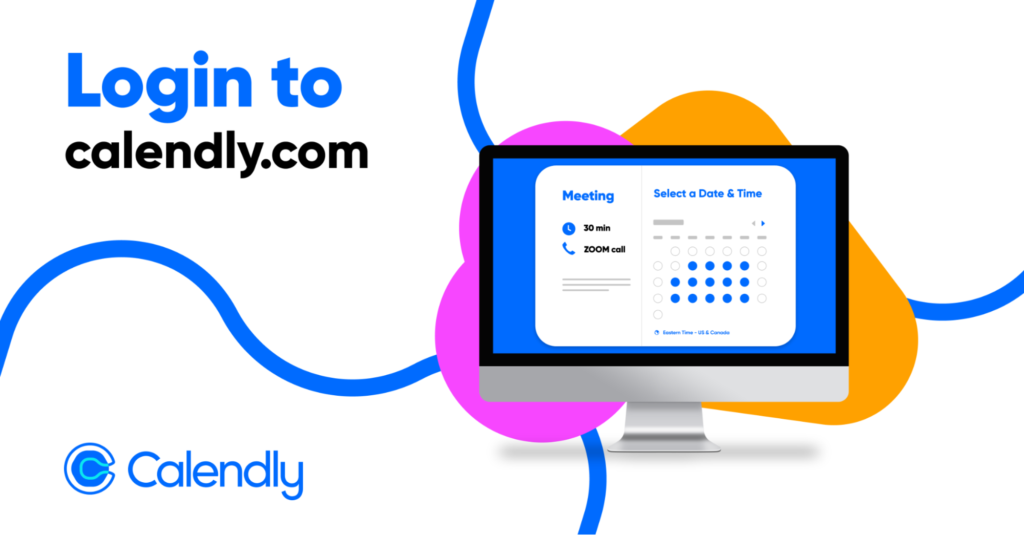
Image Source: Calendly
Calendly is a simple scheduling tool that links straight to your Google or Office 365 Calendar and lets your employees or customers schedule meetings with you. Calendly allows you to pick which calendar you want people to see (e.g., a calendar for client calls) and define a meeting duration for people to choose (e.g., 15 minutes or 30 minutes).
The cloud-based tool will then provide a personalised URL that you can share with people. They simply need to click on to see what days and times you’re available for a meeting. Think of it as a personal secretary in the cloud.
Time Management
One of the frequent misconceptions of remote work is that it requires managers to relinquish visibility of their remote staff’s performance. Time tracking software eliminates this problem, allowing you to monitor your remote teams and ensure they stay productive.
13. Time Doctor

Image Source: Time Doctor
Time Doctor is a powerful time tracking application with flexible features that adapt to individual freelancers up to large corporations like Apple and Verizon. With Time Doctor, managers can track:
- The projects and tasks your remote teams are working on
- The amount of time they spend on each project or task
- The sites they’re visiting
- The times they begin and stop working
- Your team’s daily attendance
- Client billable hours.
The application also lets remote workers set alerts, prompting them to avoid distractions and downtime.
14. Hubstaff
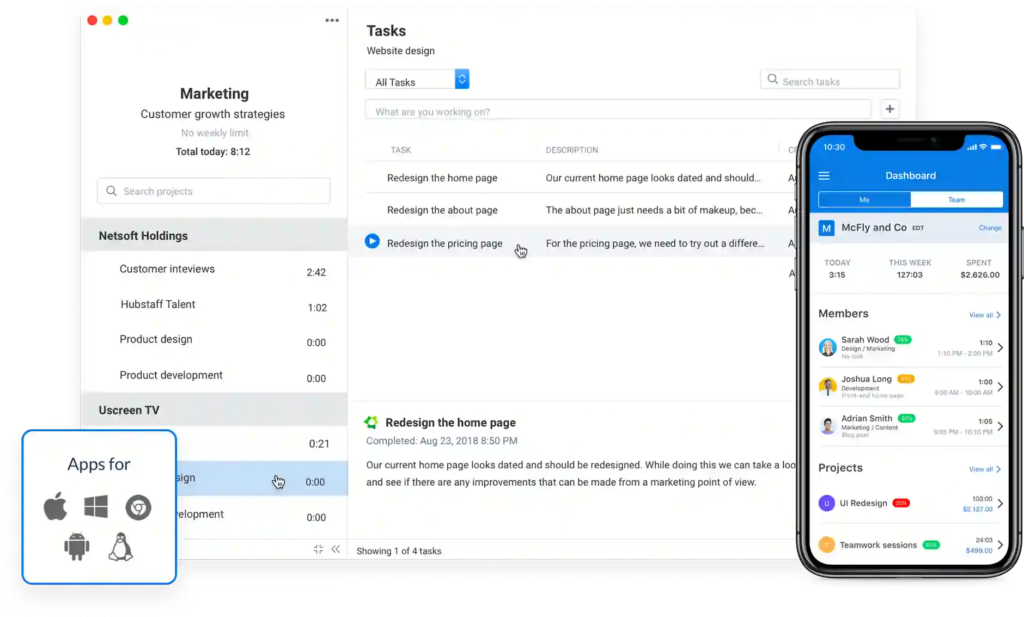
Image Source: Hubstaff
Hubstaff is an all-in-one time tracker for both field and remote teams that lets you monitor the time your employees work, payroll, and client billing.
- On the time management side of things, you can track how much time remote workers spend on tasks and set a maximum number of hours for each.
- Hubstaff can automatically generate timesheets, which your accounting and HR teams can use to track billing and payroll.
- Hubstaff can help you assess each employee’s productivity based on their keyboard activity and mouse movements.
15. Toggl Track
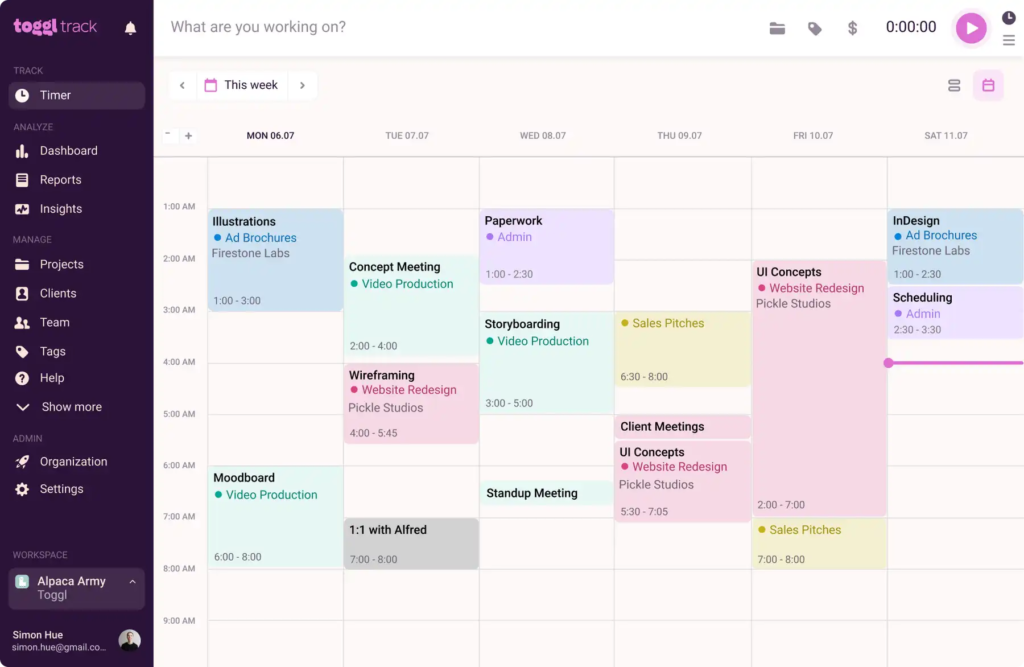
Image Source: Toggl Track
Boasting a simple and clean interface, Toggl Track is a time tracking tool that offers many of the features found in Time Doctor and Hubstaff. Toggl Track also comes in a free version with limited features — great for freelancers and small startups.
You can enable the application’s built-in Pomodoro tracker, helping your remote workers stay productive by breaking their daily schedule into 25-minute work sprints and 5-minute breaks. Rinse and repeat for maximum productivity without burning them out.
Productivity Tools
Put concerns about your remote teams’ productivity to rest by deploying a productivity tool. Choose from the three solutions below.
16. Friday
Friday also comes with a helpful Chrome extension that lets remote workers create time blocks for deep work and block distracting websites and messaging app notifications.
17. Todoist
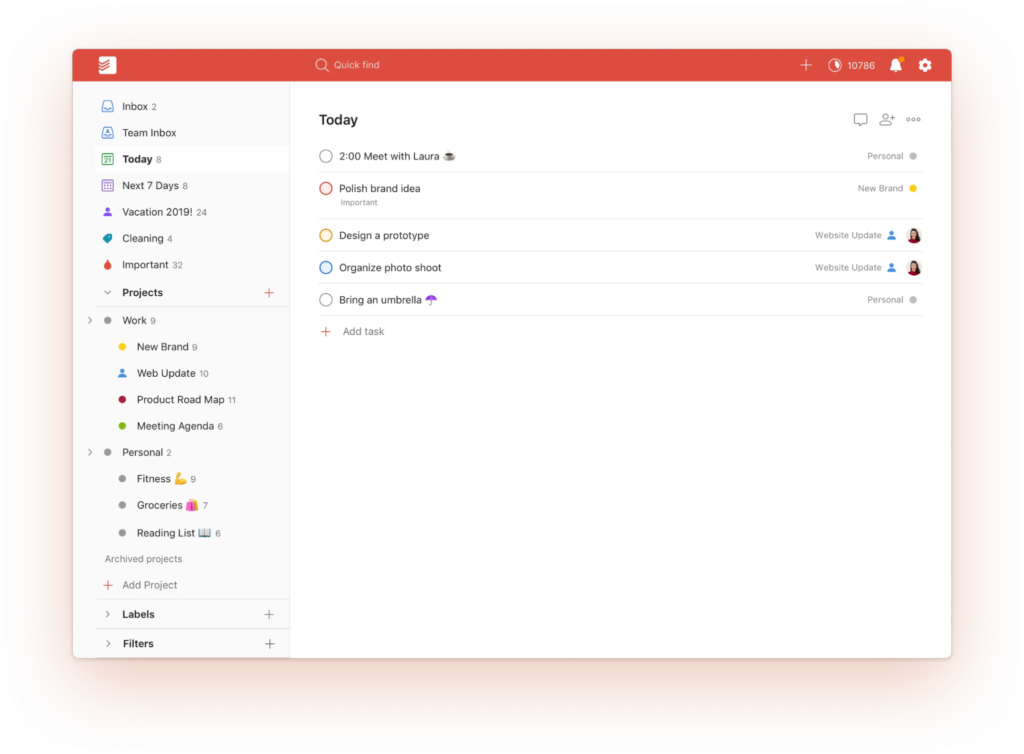
Image Source: Todoist
Todoist is a powerful to-do list app that lets you organise your work life and track your productivity across all your devices. Features include creating and managing tasks, subtasks, recurring tasks, reminders, notifications and more.
Todoist also makes it easy for remote workers to work on their most urgent tasks first, ensuring that your team automatically stays ahead of the next deadline. Team leaders can also delegate and divide tasks in shared projects to specific remote workers.
18. Way of Life
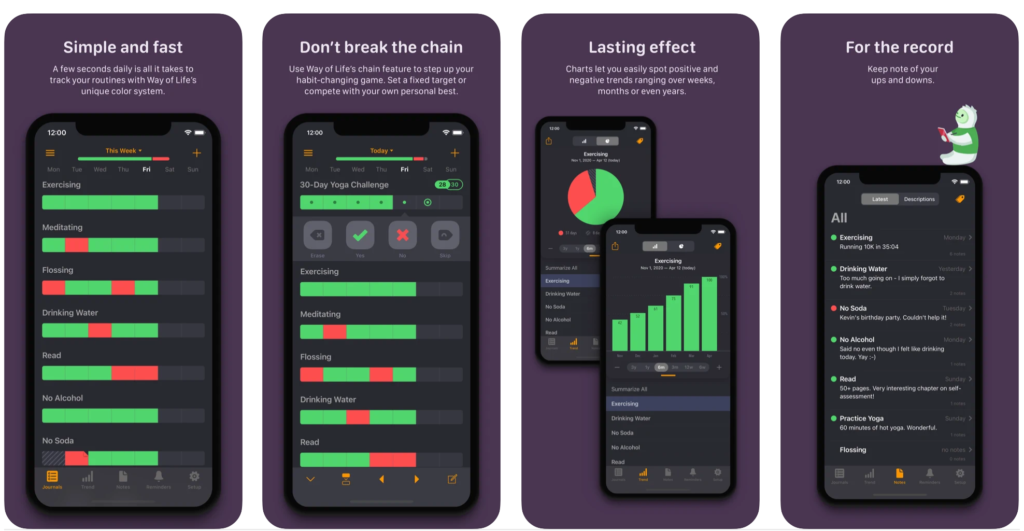
Image Source: Way of Life
Way of Life is a lifestyle app that helps remote workers maintain a healthy balance between their work and home lives. The app lets users plan their daily and weekly goals and track how far they need to go to meet them. Goals can include:
- Taking regular breaks at work
- Getting enough sleep
- Finding time to exercise
Way of Life provides a visual overview of your progress in the form of charts, graphs and scoreboards — great for gamifying your work-life balance.
Bringing It All Together
As the pandemic continues to create one massive remote work experiment, more employees and businesses that distance need not impede their productivity. With the right tools and applications, your team can manage projects, stay organisations and maintain healthy levels of collaboration.
However, don’t forget that tools are just one aspect of the equation. Be sure to provide training and support to help your remote teams make the most of any tools you invest in.
Optimising IT offers personalised digital transformation plans and IT consultancy services, including Microsoft 365 licensing and support, as well as cloud services. We can help your remote teams maximise your cloud-based tools and applications to succeed in their remote environments.
